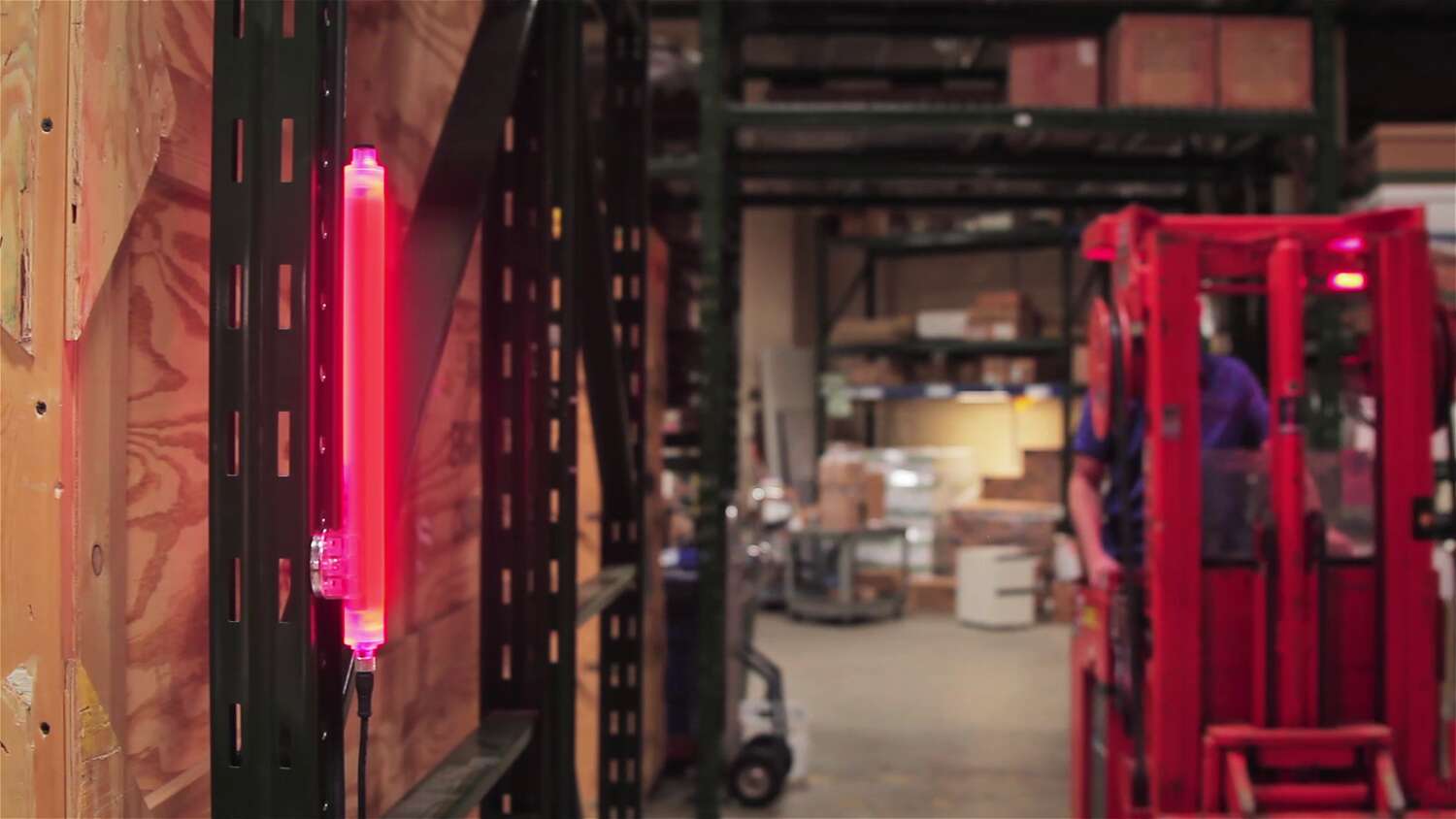
Step Into the Visual Factory
The visual factory comprises three key applications for lighting and indication in industrial settings. These applications include the ability to help machines and workstations quickly communicate their status to people nearby, use light to guide workers to perform certain tasks such as part picking, and to provide illumination for work areas and tasks. The lighting products used in the visual factory include tower lights, strip lights, touch buttons, and indicators. The capabilities of products in the visual factory range from simple single-color lights and indicators to lights that offer advanced multicolor animations and multi-tone audible alarms.
Banner leads the advancement of the visual factory with its broad and ever-expanding portfolio of industrial LED task lights, tower lights, indicators, and touch buttons that are engineered to provide bright, superior-quality illumination, clear status indication, and unmistakable operator guidance. These products offer the advantages of low power, long life, and maintenance-free operation inherent in LED technology built into rugged, industrial-grade packages.
Banner’s programmable lights can communicate more about the status of machines because they allow you to easily configure color, flashing, dimming, and advanced animations such as rotation, strobing, two-color display, two-color rotation, two-color flashing, and chase. Controlling these colors and animations can be achieved in several ways. First, colors and animations may be configured using Banner’s free Pro Editor software and then controlled through simple discrete I/O. Models with IO-Link® require no special configuration and are simply controlled by commands from the IO-Link master. For pick-to-light, put-to-light, or other operator guidance applications, PICK-IQ® (based on Modbus®) provides a method to create simple connections between devices to reduce wiring and installation time, along with simplifying the programming and setup of the system.
Programmable lights offer the additional benefit of helping companies reduce inventory SKUs by consolidating several lights into one programmable unit. For example, consider a machine builder who stocks a variety of three-segment tower lights, each with a different combination of colors and flash patterns. With Banner’s programmable tower lights, the machine builder could standardize on one tower light model and simply load the lighting configuration needed for the application during the machine build. This inventory consolidation benefit carries through to Banner’s touch buttons and programmable strip lights as well.
When machines and workstations are equipped with tower lights, andon lights, and/or multicolor strip lights, they can quickly communicate their operating condition to people working nearby, providing at-a-glance knowledge of status and performance, and accelerating the identification of problems so they may be solved quickly.
Andon lights attached to workstations allow operators to press a button that selects a specific light color to notify managers if everything is okay, if they need raw materials, or if they cannot do their job. This keeps workers from spending unnecessary time walking around looking for help and letting help come to them instead.
Tower lights installed on lathes and milling equipment can tell people exactly which step of the process the equipment is in. This enables one person to operate more than one machine as they can see where each one is in the process.
Strip lights connected to analog sensors conveniently display information about fill level, part size, piece positioning, and guidance so operators can quickly identify problems and make adjustments.
By using pick-to-light buttons, guide spotlights, and verification arrays, workers are easily shown where pallets need to be dropped, parts need to be picked, and boxes need to be placed, helping to reduce cycle times, error-proof processes, and streamline training.
Applying pick-to-light buttons helps error-proof the assembly process by directing workers to specific bins to get parts so that all the correct parts are picked and used in the right order. These lights also help identify when the wrong part was picked, immediately notifying the worker via the light. Additionally, pick-to-light helps reduce training time by guiding people through the process automatically.
A similar but larger-scale application for pick-to-light is when high-power guide spotlights are used to illuminate areas where pallets need to be both picked up and placed without obstructing the work area.
Tower light and strip light segments can be activated based on process step completion or time elapsed during an assembly step. This shows workers where they are in the process and provides task time guidance to keep the line running smoothly.
Providing adequate light for people in work areas or supplemental light for performing specific tasks helps boost worker productivity and improve product quality. Additionally, energy-efficient lights help reduce energy costs.
Inspection lights help provide workbenches, assembly stations, and visual inspection stations and tunnels with bright, even light, increasing worker productivity, ergonomics, and providing illumination exactly where it is needed, allowing operators to monitor processes effectively while completing automated and manual tasks.
Strip lights installed in control panels give maintenance technicians better visibility compared to typical alternatives such as handheld lights. Better control panel lighting helps technicians when installing or replacing components, troubleshooting wiring errors, and reprogramming PLCs.
Incorporating colored LEDs into standard illumination products gives a 2-for-1 combination of illumination and status indication, allowing operators and supervisors to focus on the work area but still get status change updates.
Banner’s commitment to product innovation and practical application solutions, like programmable lights and the versatile use of LEDs, streamlines operations, reduces training times, and optimizes performance. We look forward to talking to you about how we can help take your first step into the visual factory.